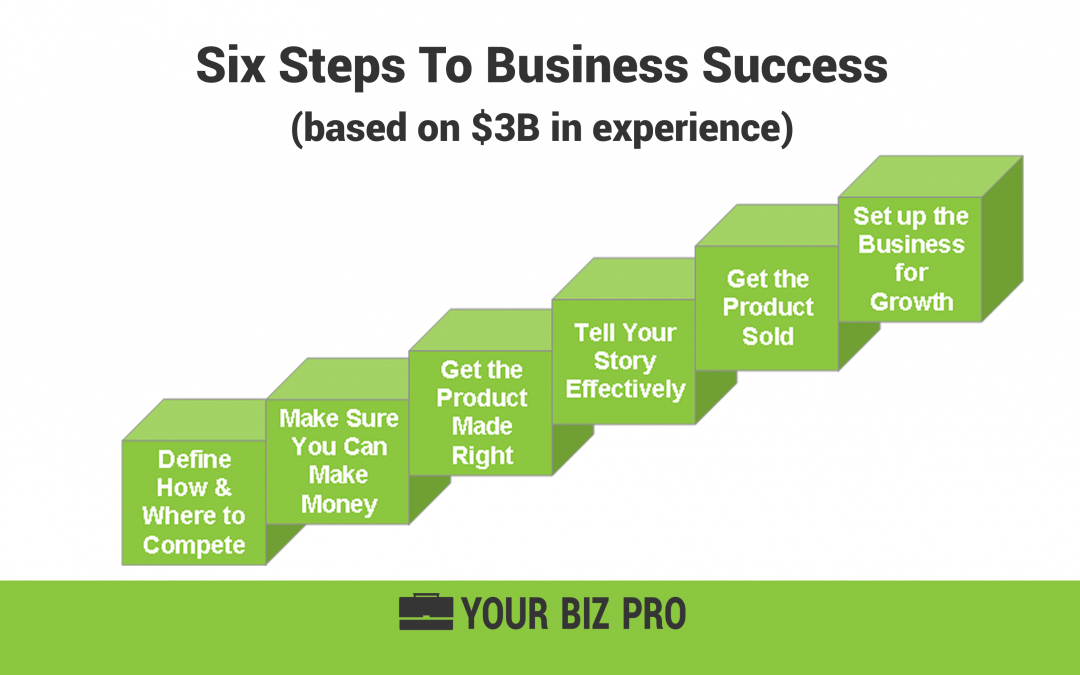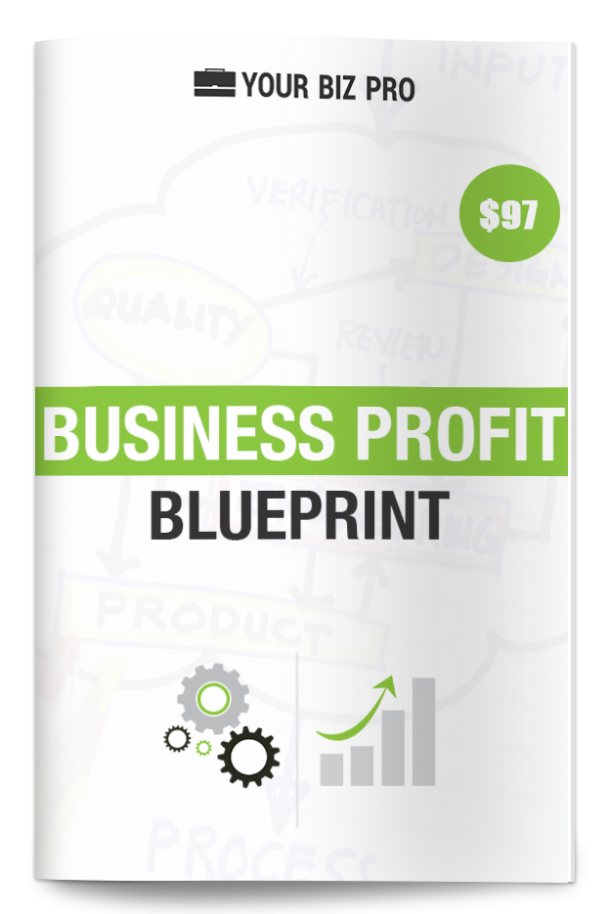So far, my product and marketing efforts have resulted in over $3 Billion in net sales.
Clearly I’ve had my share of business success. As you can imagine, I also had a lot of failures along the way.
Frankly I much prefer the successes!
So I drilled down to the root causes of the failures to figure out how to avoid them.
And looked for the common things about the successes, so I could do those things consistently.
Over time, I realized that there are essentially six steps to business success.
The more these steps are followed, the greater the likelihood of success.
Here is a list of the Six Steps and a few short comments about each of them (I could spend hours on each, but a blog isn’t the place for that!):
1. Define Where and How You Will Compete:
What problem do you solve, for which specific group of people; and why should they pay for your solution instead of the thousands of other options they have? Seriously – if you are not willing to do your homework and can’t find a way to be competitive, don’t get in the game.
2. Make Sure You Can Make Money:
This sounds obvious, but a lot of costs are not obvious, and not being able to anticipate them is fatal. The timing of money is also important to understand (a key item in Step 6). To paraphrase Seth MacFarlane: there are a million ways to die in a business – most of them have to do with money.
3. Get the Product Made Right:
The first question is “should you make it” (maybe licensing is better, maybe you can’t make a profit, etc). If you should make the product, you need to understand what is involved, how to estimate costs, and how to get it done properly. By properly I mean as quickly as practical for as low a cost as possible.
4. Tell Your Story Effectively:
A better story will beat a better product. The time you spent researching in step 1 will pay huge dividends here because you will know exactly who you are targeting, where they spend their time online (I strongly recommend most advertising dollars be spent online due to the targeting and measurement capabilities available), and how to tell them about your solution in a way that is meaningful to them. That is why you don’t need the best product, you need a competitive product and the right story for the target – one that resonates with them on an emotional level.
5. Get Your Product Sold:
The type of product and customer will help determine the best way to go to market (Online, MLM, Channel), but every product and service should be offered online (it has never been easier to set up an online store). Although it might sound counter-intuitive, over distribution is evil: keep control of your brand position in the market.
6. Set Up the Business for Growth (and your desired lifestyle):
To manage and grow a business, you need templates, systems and controls. Without them, you can’t delegate, control quality, or afford to grow. You also need to keep track of your key metrics so you can spot problems and growth opportunities when they are small and easier to act on. Most important of all is managing cash flow. You need to understand the timing of your money flow, and plan your funding and spending with cash flow in mind.
I hope you find this (very) short overview helpful. For a bit more detail – be sure to download our free Blueprint from the home page (www.YourBizPro.com ).


